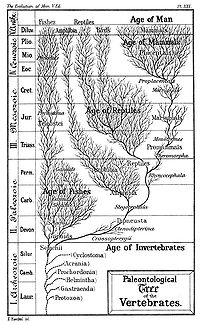
Photo from wikipedia
Hydrogen (H2) is a clean fuel that can potentially be a future solution for the storage of intermittent renewable energy. However, current H2 production is mainly dominated by the energy… Click to show full abstract
Hydrogen (H2) is a clean fuel that can potentially be a future solution for the storage of intermittent renewable energy. However, current H2 production is mainly dominated by the energy intensive steam reforming reaction, which consumes a fossil fuel, methane, and emits copious amounts of carbon dioxide as one of the byproducts. To address this challenge, we report a molecular catalyst that produces H2 from aqueous solutions, is composed of affordable, earth-abundant elements such as nickel, and has been incorporated into a system driven by visible light. Under optimized conditions, we observe a turnover number of 3880, among the best for photocatalytic H2 evolution with nickel complexes from water-methanol solutions. Through nanosecond transient absorption, electron paramagnetic resonance, and UV-vis spectroscopic measurements, and supported by density functional theory calculations, we report a detailed study of this photocatalytic H2 evolution cycle. We demonstrate that a one-electron reduced, predominantly ligand-centered, reactive Ni intermediate can be accessed under visible light irradiation using triethylamine as the sacrificial electron donor and reductive quencher of the initial photosensitizer excited state. In addition, the computational calculations suggest that the second coordination sphere ether arms can enhance the catalytic activity by promoting proton relay, similar to the mechanism among [FeFe] hydrogenases in nature. Our study can form the basis for future development of H2 evolution molecular catalysts that incorporate both ligand redox noninnocence and alternative second coordination sphere effects in artificial photosynthetic systems driven by visible light.
Journal Title: Inorganic chemistry
Year Published: 2019
Link to full text (if available)
Share on Social Media: Sign Up to like & get
recommendations!